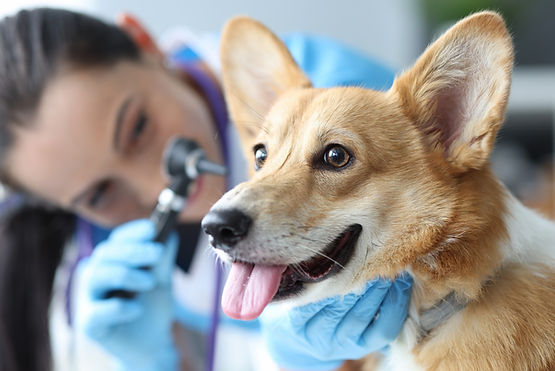Before committing to getting a dog, it’s important to consider the financial implications of dog ownership. Many people underestimate the cost of caring for a dog and end up facing financial challenges as a result. If you can’t afford a dog, it’s best not to get one, as the expenses can add up quickly. In this article, we’ll delve into the various costs associated with dog ownership and discuss why it’s crucial to be financially prepared before bringing a new pup into your home.

The Cost of Owning a Dog: What to Expect
The cost of owning a dog goes beyond the initial acquisition. There are ongoing expenses to consider, such as food, equipment, insurance, veterinary care, and training. It’s important to be prepared for the financial commitment that comes with welcoming a dog into your home.
When it comes to the financial considerations of dog ownership, the initial cost of acquiring a canine companion is an important factor to consider. If you opt to purchase a dog from a breeder, the price can vary widely depending on the breed, age, and other variables. Purebred puppies can cost anywhere from a few hundred to several thousand dollars. On the other hand, adopting a dog from a shelter or rescue organization is often more budget-friendly, with fees typically falling between $25 and $500. It’s worth noting, however, that rescue dogs may come with additional expenses if they require medical treatment or behavioral training.
Before making the decision to bring a new dog or puppy into your home, it’s important to think about the cost of initial supplies as well. To help you get started, here is a list of essential items you will need to provide for your four-legged friend.
Basic Supplies:
The crate: a simple yet essential tool in the life of any responsible dog owner. With its den-like structure, the crate provides a secure space for your dog to rest and relax, as well as offering a convenient way to house train and keep your dog safe when you’re not around. But with such a wide range of options on the market, how do you choose the right crate for your needs?
First, consider the material. Plastic crates can range in price from $30 to $250, while wire crates can cost anywhere from $50 to $200. Soft-sided crates and wooden crates can also be options, with prices ranging from $50 to $150 and $100 to $500, respectively. It’s important to shop around and compare prices from different retailers to ensure you’re getting the best deal.
But don’t forget: the crate is an investment in your dog’s safety and comfort, so it’s important to choose one that meets your needs and budget. And if you’re looking for a more affordable option, sites like OfferUp and craigslist can often have used crates in great condition for a fraction of the cost. Crates available here.
Leash: When it comes to choosing the right leash for your dog, there are several options to consider. Personally, I prefer nylon leashes for daily use due to their light weight, durability, and affordability (typically ranging in price from $3-$20). For training, a long line leash can be a great option to give your dog more freedom while still maintaining control (typically ranging in price from $10-$40). And for recall training, a flexi leash can be a useful tool to allow your dog some extra slack while still being able to quickly reel them in if necessary (typically ranging in price from $20-$60). Ultimately, the right leash for you and your dog will depend on your personal preference and specific training needs. For more information on choosing the right leash for your dog, check out the leash section of my Amazon store.
The collar: It’s not only a practical tool for attaching your dog’s identification tags and leash, but it can also serve as a means of training and control. Personally, I recommend using a martingale collar, which prevents the dog from slipping out of the collar while still being gentle on their neck. But with so many options on the market, how do you choose the right collar for your canine companion? Consider the material: nylon collars are often the most affordable, with prices ranging from $5 to $20. Leather collars can cost anywhere from $20 to $50, while fabric collars typically cost between $10 and $30. Custom collars, which can be tailored to your specific needs and preferences, can cost anywhere from $30 to $300 or more.
Remember, the collar is an important tool for your dog’s safety and well-being, so it’s worth investing in one that meets your needs and those of your pup.
Food and water bowls: It’s crucial to have sturdy and easy-to-clean food and water bowls for your dog. I recommend choosing durable options like rubber-bottom bowls, which can withstand daily use and make an excellent choice for training exercises like place commands (you can see an example in this video). These types of bowls typically cost around $12 to $20, a small price to pay for ensuring your pet’s overall health and well-being
Dog food: As a dog owner, it’s important to provide a nutritious and balanced diet for your dog. The cost of dog food can vary widely based on the size of your dog, the type of food you choose, and other factors such as the brand and any special dietary needs. On average, dry dog food can cost $20 to $100 per month, while other types of food such as wet, freeze-dried, dehydrated, and frozen raw can range from $1 to $38 per pound. Larger dogs may require more food, which can increase the overall cost.
Allow me to present a rough estimate of the annual expense of dry dog food for various breeds of varying size, using a monthly cost of $50 to $90 as a benchmark:
- Small dog breeds (under 20 lbs): $600 to $1080 per year
- Medium dog breeds (20-50 lbs): $900 to $1620 per year
- Large dog breeds (50-100 lbs): $1400 to $2520 per year
- Extra Large dog breeds (over 100 lbs): $1800 to $3240 per year
It’s important to note that these calculations can also apply to wet, freeze-dried, dehydrated, and frozen raw food types, but the cost will vary even more depending on the breed, age, lifestyle, and specific health needs of the dog. As the size of the dog increases, so too does their required sustenance and thus, their food costs. An example, if a small dog (25 lbs) consumes half a pound of food per day at a cost of $5 to $10 per pound, the annual cost for food can be calculated as $912.5 to $1,825. And for a larger dog (50 lbs) consuming 1.5 pounds of food per day at the same cost, the annual expense would be $2,737.5 to $5,475.
The rough estimates I provided are meant to give you an idea of the potential cost of dog food, but to make a proper plan for your dog’s diet, it’s important to research the best food options for your dog’s specific needs based on their breed, age, lifestyle, and health requirements. This will help you budget accordingly for your canine companion.
When it comes to kibble, I prefer to use N&D, especially when implementing continual reinforcement during training.
Once I am done with continual reinforcement, I like to provide my dog with a raw diet options like Steve’s Real Food, Vital Essentials, Small Batch, and Northwest Naturals.
Puppy pen: a puppy pen can be an incredibly useful tool for keeping your new dog contained and safe while they learn proper house manners. From playpens to exercise pens, there are many options available at a range of prices, usually between $50 and $300. And if you want to see how I introduce puppies to their new homes, check out this YouTube episode.
Gates: Gates are a useful tool for controlling the movement of your dog within your home. Whether you need to block off certain areas or create a designated space for your pet, gates can be a practical and effective solution. Prices for these barriers can vary, ranging from $20 to $160. Keep in mind that the cost may depend on factors such as size, material, and features.
Dog bed: A necessary staple for any canine household. Whether you have a small pup who snuggles up in a ball or a larger dog who sprawls out like they own the place, a good dog bed is essential for providing a comfortable place for your dog to sleep and rest. Prices for dog beds can range from a budget-friendly $20 for a basic foam bed to a lavish $300 or more for a luxury or designer option.
My go-to dog bed for training sessions is the Petcot brand bed with the paw print design. For more comfortable lounging at home, my dogs prefer their couch and king-size bed. Yes, my dogs have their own king-size bed—lol!
Toys: Play is one of the best ways to strengthen the bond between you and your dog. As a professional dog trainer, I can attest to the importance of providing your pup with toys to keep them entertained and mentally stimulated. It’s crucial to choose toys that are appropriate for your dog’s size and chewing habits, as well as durable enough to withstand regular use. When I bring a new dog into my home, I like to start with a few basic toys like chuck-it balls, a tug toy, a frisbee, and a couple chew toys. This typically costs between $60 and $100, depending on the specific toys you choose. I share many of the toys I use with my dogs in my Amazon store.
Flea, tick and heartworm prevention: The cost of flea, tick and heartworm prevention for dogs can vary, but generally ranges between $200 – $275 per year. For heartworm prevention, it usually costs between $80 – $120 for a year supply. Whereas, flea and tick prevention is around $120 – $155 per year. It’s recommended to consult with a veterinarian to find the best options that fit your pet’s specific needs and lifestyle, as certain prevention methods may require regular check-ups and testing.
Basic grooming gear: Maintaining your pup’s hygiene is essential, whether you prefer to handle grooming yourself or hire a professional. My go-to list includes a dog brush (I highly recommend the FURminator), nail clippers or grinder, shampoo, and waterless shampoo. Be sure to choose a brush that is appropriate for your dog’s coat type and remember to budget for the cost of these supplies. A good starting set will run you around $75, but you can also opt for a professional groomer for anywhere from $30 to a few hundred dollars for a luxury mobile service that comes to your home. Either way, taking care of your dog’s grooming needs is crucial for keeping their coat healthy and clean.
By having these supplies on hand, you will be well-prepared to welcome your new dog into your home and take care of their needs.
Other Expenses
In addition to these basic expenses, you may also need to budget for additional costs such as veterinary care, spaying or neutering, pet insurance (highly recommended), microchipping, licensing, training, and emergency care (if you choose not to get pet insurance).
Veterinary care:

As a responsible pet owner, it’s important to prioritize the health and well-being of your new dog. One of the first steps in ensuring your dog’s health is scheduling an initial veterinarian appointment as soon as possible after bringing them home. It is imperative to schedule your new dog’s initial visit to the veterinarian within the first few days of welcoming them into your home. This ensures that they receive necessary preventative care to maintain their health or receive treatment for any potential illnesses before they become severe or potentially fatal.
The cost of this initial veterinarian appointment can vary depending on a number of factors, including the age of the dog, the services needed, and the location of the veterinary clinic. On average, you can expect to pay between $50 and $200 for a basic check-up, which will typically include a physical examination, vaccines, and any necessary tests or treatments. Here in California, my vet appointments usually range from $150 to $300. It is always a good idea to shop around and get quotes from a few different clinics in your area to find the best price for veterinary care. Additionally, you may want to consider purchasing a pet insurance policy (which we’ll discuss next) to help cover the cost of unexpected veterinary expenses.
Regular check-ups and vaccinations are important for keeping your dog healthy, and these visits can add up. You can expect to pay around $200 to $300 per year for routine care, but this number can increase significantly if your dog requires any medical procedures. By prioritizing your dog’s health from the start and establishing a relationship with a local veterinarian, you can give your loyal companion the best possible care and ensure a happy and healthy life together.
Some of the most common vaccines that may be given to a dog during their first appointment include:
Rabies vaccine: This vaccine is required by law in many areas, and it is important for protecting your dog against a potentially deadly virus.
Distemper vaccine: This vaccine protects against a highly contagious and potentially deadly virus that can affect a dog’s respiratory, gastrointestinal, and nervous systems.
Parvovirus vaccine: This vaccine protects against a highly contagious and potentially deadly virus that affects a dog’s gastrointestinal system.
Leptospirosis vaccine: This vaccine protects against a bacterial infection that can affect a dog’s kidneys and liver.
Bordetella vaccine: This vaccine protects against a highly contagious respiratory infection that is commonly known as “kennel cough.”
It’s important to discuss your dog’s vaccine needs with your veterinarian, as they will be able to recommend the specific vaccines that are appropriate for your dog based on their age, lifestyle, and overall health. In addition to financial considerations, it is also important to prioritize your dog’s overall health and well-being. This includes providing a balanced diet, regular exercise, and plenty of mental and physical stimulation. By taking good care of your dog, you can help prevent many potential health issues and improve their quality of life.
For a detailed breakdown of what you can expect to pay for veterinarian care, check out this comprehensive article in Forbes by Ashley Kilroy. From vaccinations to check-ups, the article covers the prices and fees you’ll encounter when visiting the vet, especially when you’re getting a new puppy, expect to visit the vet 3-4 times, which will cost around $300-$600 or more the first year.
Spaying or neutering:
On top of the normal veterinarian expenses, many people choose to spay or neuter their dog, also known as sterilization. Many veterinarians believe that spaying or neutering a dog may have numerous benefits, including reducing or eliminating certain behaviors such as roaming, marking territory, and aggression, as well as reducing the risk of certain health problems like mammary gland tumors and prostate cancer. The cost of the procedure can range from $150 to $250 or more, depending on the size of the dog, the location of the veterinary clinic, and the type of anesthesia used. Some veterinary clinics offer low-cost spay and neuter programs for pet owners who cannot afford the full price.
It is generally recommended by many veterinarians to wait until a dog is at least six months old, many suggest waiting a year to undergo the procedure. Many people believe that spaying or neutering a dog can be a worthwhile investment with numerous long-term benefits. It is important to discuss the options with a veterinarian and consider the individual needs of your dog before making a decision.
Pet Insurance:
Dog health insurance can be a valuable investment in your dog’s long-term health and well-being. The average cost of a policy can vary based on your dog’s age, breed, and coverage needs, but expect to pay between $40 and $90 per month. Some policies may cover just accidents and emergencies, while others may offer more comprehensive coverage for things like routine check-ups and vaccinations. When shopping for a policy, consider the age and breed of your dog, coverage options, deductibles and co-payments, and exclusions. Keep in mind that these are average costs and may vary depending on your location and your dog’s specific needs. It’s a good idea to budget for ongoing medical expenses and consider whether you can afford the costs of dog ownership.
Dog health insurance is not a legal requirement, but it can provide peace of mind and financial protection in the event of unexpected medical expenses. In “Blink,” Malcolm Gladwell (one of my favorite authors) popularized the concept of “thin-slicing,” the ability to make rapid decisions based on limited information. But even the most experienced decision-maker can’t anticipate everything, as I learned firsthand when my own dog, Arih, suffered a punctured eye from a yucca plant. I immediately sought out an eye specialist, and while the treatment cost a hefty sum—over $5,000—it was a small price to pay for Arih’s continued good vision in both eyes. That incident convinced me of the value of pet insurance, which I now have for both of my dogs. Even the most careful and conscientious pet owner can’t always prevent accidents or illness, but having pet insurance means that we don’t have to choose between our pet’s health and our own financial stability, allowing us to prioritize the care of our beloved companions.
Microchipping:
Dog microchipping is a simple and safe procedure in which a small chip, about the size of a grain of rice, is injected under your dog’s skin. The chip contains a unique identification number that is linked to your contact information in a national database. If your dog is lost or stolen and is found by a shelter, vet, or animal control agency, they can scan the chip and use the identification number to find your contact information and reunite you with your pet.
Microchipping your dog is a permanent form of identification and can help reunite you with a lost or stolen dog. It’s a one-time cost that can range from $25 to $75, depending on the location and provider. Some states and municipalities have laws requiring dogs to be microchipped, and some facilities like dog parks and boarding kennels may require microchipping.
To microchip your dog, make an appointment with a provider, register the chip with a national database, and keep your contact information up to date. I highly recommend microchipping your dog as a simple and safe way to ensure their safety and well-being.
Licensing:
Dog licensing is a process in which owners register their dogs with their local government, typically by filling out an application and paying a fee. It serves several important purposes, including promoting the health and well-being of dogs, reuniting lost pets with their owners, and funding animal welfare programs. To obtain a dog license, owners typically need to provide proof of their dog’s vaccination status and possibly proof of spay/neuter and ownership, and pay a fee of around $10 to $20 per year. Dog licensing is required in many cities and towns across the United States and the process of obtaining a license is typically straightforward.
Training:
Training your dog can be an important investment in their well-being and can strengthen the bond between you and your pooch. There are several options for dog training, including classes at a local training facility or through a private trainer, board and train programs where your dog stays at a training facility for intensive training, group classes with a small group of dogs and their owners, and books and online courses. YouTube can also be a resource for dog training information, but it’s important to be cautious and do your research before trying any new techniques. No matter which training option you choose, it’s important to be consistent and patient as you work with your dog. Training can range in price from $50 to $300 or more per class or $350 to $1500 per week for a board and train program.
Emergency care:
As a dog owner, it’s important to be prepared for unexpected medical expenses by having a plan in place for emergencies. This includes knowing the location and phone number of the nearest emergency veterinary clinic, having a list of your dog’s medications and allergies, and keeping their veterinary records on hand. Before leaving for the emergency clinic, you can help your dog by keeping them calm and quiet, applying pressure to any wounds, and clearing their airway.
At the emergency clinic, be prepared to provide the veterinarians with as much information as possible about your dog’s condition and any medications they are currently taking. It’s also a good idea to bring a list of your dog’s allergies, as well as any recent changes in their behavior or health. In addition to being prepared for emergencies, it’s important to take preventive measures to help avoid accidents and illnesses. This includes keeping your dog up-to-date on their vaccinations, providing them with a healthy diet and plenty of exercise, and keeping them away from hazardous substances. The cost of emergency care for a dog can range from several hundred to several thousand dollars, depending on the severity of the situation.
If you don’t have pet insurance, you may find yourself facing a bill for emergency veterinary care that ranges from $500 to $10,000 or more. The cost of unexpected veterinary treatment can be financially devastating, especially if your pet requires ongoing care or surgery. Pet insurance helps to mitigate these costs, giving you peace of mind and allowing you to focus on your pet’s health rather than worrying about how you’ll afford necessary medical care.

In conclusion:
As a society, we often underestimate the true cost of dog ownership. Many of us bring home a new dog without fully considering the financial implications of this decision. But the truth is that the costs of owning a dog can add up quickly. From initial acquisition and supplies to ongoing expenses like food, medical care, and training, there are many factors to consider when budgeting for a new dog.
It’s important to carefully evaluate your financial situation before making the commitment to own a dog. Are you prepared for the unexpected? Emergencies and unexpected veterinary bills can arise at any time, and it’s important to be ready for them. And don’t forget about the ongoing expenses of dog ownership. Food, medical care, and training all add up over time.
So, before you bring home that adorable puppy or adopt a new dog, take a moment to consider the true cost of dog ownership. Can you afford it? By understanding the financial responsibilities of dog ownership, you can ensure that you and your dog are happy and healthy for years to come.
